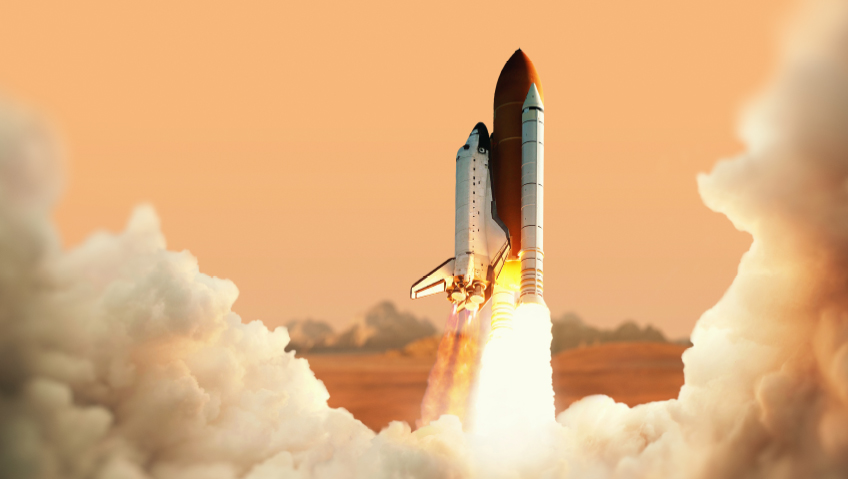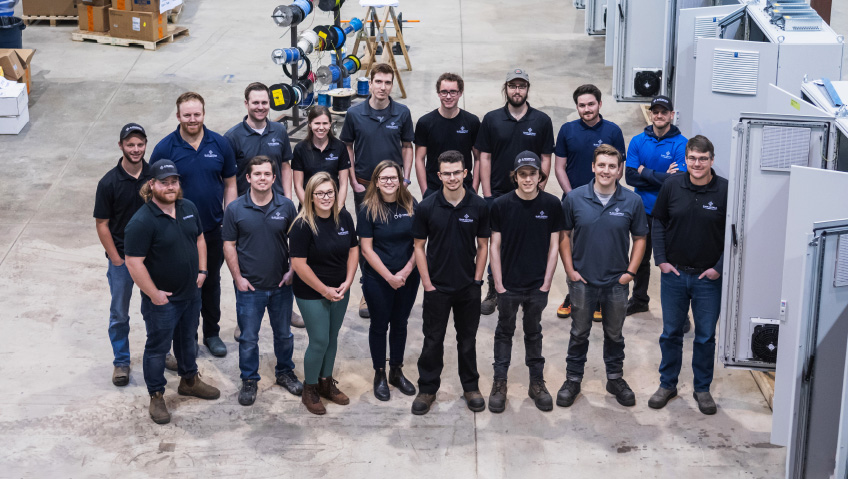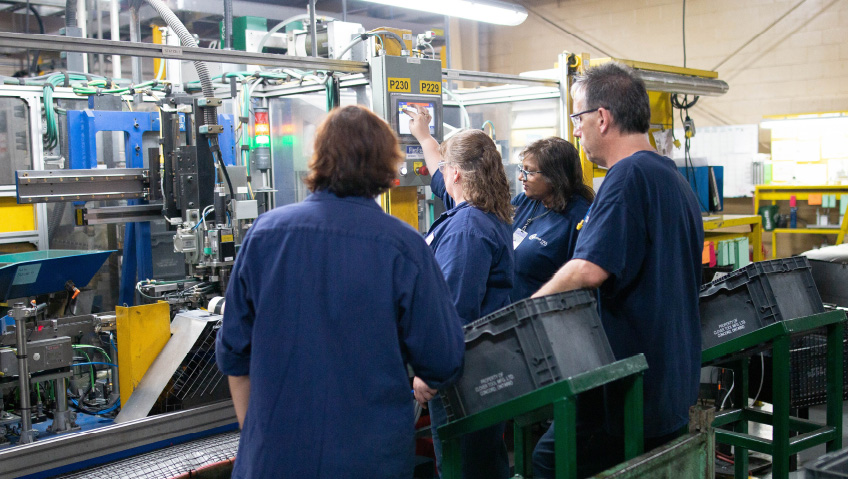As technology continues to improve and develop rapidly across all business sectors and global regions, there is still a great deal of interest in developing the technology that will usher humanity into the next generation of space travel. This development includes the manufacturing sector, as present-day methods are coming together to produce some of the most sophisticated and advanced vehicles and spacefaring technology the world has ever seen.
The latest developments in space technology and manufacturing are happening within a new and exciting time for the space industry. In a piece for Frontiers titled, “Current Challenges and Opportunities for Space Technologies,” Guglielmo S. Aglietti defines the current period of consolidation of space technologies as “Space 4.0,” (also referred to as “New Space” as some companies enter the space sector for the first time). The space sector is seeing “changes of motivations, actors, and, indeed, technologies,” as more businesses jockey for position to offer the next, best innovations for spacefaring missions.
Space 4.0 doesn’t just apply to new businesses, but even to new ways of conducting business and exploration in space, such as tourism in space or mining of asteroids for materials.
For Brookings, Landry Signe and Hanna Dooley detail in “How space exploration is fuelling the Fourth Industrial Revolution” how space exploration and growth of the sector relates to what is referred to as the 4IR (4th Industrial Revolution, or Industry 4.0), the next step in human and technological development that we are currently in. Signe and Dooley say that the disruptive effects of the ongoing 4IR on industry at large “have the potential to improve the quality of life for populations across the globe,” from fostering economic growth to combating various levels of inequality and reinventing and modernizing the current definitions of how we look at work, life, health, and more. The advancements of technologies like the blockchain, AI (artificial intelligence), 3D printing, nanotechnology, biotechnology, and more all relate back to the further exploration and understanding of space.
Global efforts to capitalize on this arena of new players and ideas are well underway. In a piece titled, “Unveiling vehicles and technologies for future space transportation,” the ESA (European Space Agency) touts the FLPP (Future Launchers Preparatory Programme) as an effort to enable studies and research to “foster new and disruptive technologies” that can reduce costs, improve performance and reliability, or further fulfill the needs of a space mission or system. One of these FLPP projects is Prometheus, Europe’s first ultra-low-cost reusable rocket engine demonstrator that is fuelled by liquid methane. This will look to aid European space launches over the next decade and beyond.
A general focus of the FLPP is to look further into alternative materials that can reduce the weight of new rockets. “New carbon composite materials are being used to replace aluminum for lighter upper stage structures and fuel tanks, as well as for rocket fairings that protect the payloads on their way to space,” according to the ESA. Other experimental materials include closed-cell polyurethane foam for external tank insulation, and the potential use of electro-mechanical actuators for smoother separation and jettison of payloads. The work of FLPP is also concerned with greater manufacturing efficiency and production methods that will cut down on time and even manpower, as solutions into AI and machine learning are being explored.
Like its European counterpart, NASA (National Aeronautics & Space Administration) has its own program for evaluating new technologies and research to support space endeavours, called NIAC (NASA Innovative Advanced Concepts). NASA is constantly keeping its eyes on new ways to bring objects, and eventually people, into space. Currently ongoing is the Artemis program, which is looking to return humans to the moon as early as 2025, with the long-term goal of establishing a moon base to facilitate launching humans further into space toward Mars.
In a piece titled “Next generation of materials for space applications,” writers for Frontiers outline what the next generation of materials for space applications will need to look like. To start, such materials will need to be especially durable, resistant to radiation, lightweight, strong, and made of sustainable material. Composite materials will also be a must, along with nanotechnology-assisted materials (i.e. carbon nanotubes) and smart materials that can respond to changes in environment (i.e. shape memory alloys and piezoelectric materials). Carbon nanotubes are both lightweight and strong and can conduct electricity, making them ideal for use in solar panels or as radiation shielding, as well as for spacecraft, habitats, and more.
NASA itself has recently developed a new type of metal alloy through 3D printing called NASA Alloy GRX-810. It announced in a press release that the alloy can improve strength and durability of its components and parts used in aviation and space exploration, which can improve overall performance. It can also be used at high temperatures, is more malleable, and can survive 1000 times longer than current like alloys.
Signe and Dooley say in their article that advancements in materials science and 3D printing have decreased space launch costs, and the adoption of advanced materials like carbon fibre and advanced composites in the construction of rockets is leading to safer and more cost-efficient vehicles and vessels. Signe and Dooley say that oxygen and kerosene engines now take only 24 hours to produce through 3D printing as part of the manufacturing process, and this kind of development will continue to improve over the years.
FACC AG is a manufacturing company that has become an adopter of composite materials in the manufacture of space-borne objects. In a blog post for its website titled, “Composites: The future lies in space,” the company says that the use of fibre-reinforced composites has increased over the past few decades “due to their unique combination of low density, high stiffness and strength, and toughness,” to the point that these composites are considered “the next generation of materials for space applications.” These composites are key in reducing the weight of structures and systems in space (an ongoing challenge) as they are more resistant and stiffer and are more amenable to the environmental uniqueness of space.
Material development goes together with the innovations currently being planned and executed in space vehicles. In a 2022 article titled, “California startup Astrolab unveils space rover, more than a mere ‘moon buggy,’” Reuters reported that Venturi Astrolab, a California-based manufacturer, has a new brand of explorer vehicle that it calls FLEX. This four-wheeled vehicle has been developed to transport both astronauts and cargo and may end up being the vehicle appointed to the Artemis program in a few years.
In a piece for Tech Briefs titled, “10 Surging Space Startups,” Chitra Sethi deems that this new environment is a promising one for startup companies looking to make an impact in the space field. These newer companies, according to Sethi, can make their mark in areas like exploration, launch vehicles, satellites, and even assembly / manufacturing. For example, Firefly Aerospace is a space transportation company that is looking to develop a family of vehicles and services for spacefaring, including its signatures Space Utility Vehicle and Blue Ghost Lunar Lander, and has already been awarded a $112 million NASA contract to deliver multiple lunar payloads in 2026.
In a piece for Cosmos Magazine titled, “Heading for Mars? Not until a lot of work on novel space materials is completed,” Dr. Nisa Salim says that previous space missions used heat shields made of fibreglass honeycomb-filled polymer resin, compared to more recent missions that employ resin-impregnated carbon fibre. To further protect space vehicles, multicomponent impact-resistant materials have been developed using mounted aluminum and layers of Kevlar bonded with resin. These systems are not yet perfect, though, as once composites and coatings are bonded with resin or polymer, it is permanent, meaning that any damage to the surface means that it must be completely replaced instead of incrementally repaired.
Newer hybrid material composites like carbon fibre or CRFP (carbon nanotube reinforced polymer composites) look to improve on current metal alloys by lowering weight without giving up protective strength. Newer materials will likely implement self-healing agents in parts like microcapsules and hollow microfibers to respond to damage autonomously.
There is no end to the level of innovation and discovery occurring in the space sector, but time will tell how it will not only continue to evolve, but how these new approaches of manufacturing, research, and development will pan out into space exploration and even colonization.






